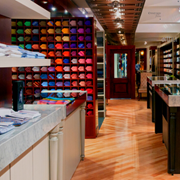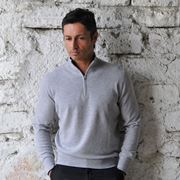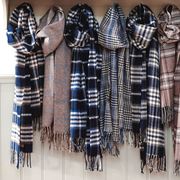As the weather gets warmer, it's necessary to switch from your traditional wool suits to lighter, more breathable garments. With the availability of luxury summer fabrics, like silk and linen, this seasonal transition can be seamless. But-have you ever wondered where these fabrics originate from? And, how they're produced?
Read on to follow the interesting journey of your favourite summer garments-from start to finish.
Silk:
Silk is synonymous with luxury, and it's also a fabric with a long history of production. It originated in Asia some 5,000 years ago. Initially, "wild silk" was extracted from discarded moth cocoons and teased out into individual threads. Soon thereafter, "sericulture" came about, which is the rearing of silkworms for the purpose of harvesting silk.
These worms spin their cocoons on a twig and once completed, the cocoon is heated until the silk unravels and becomes a single thread. Then, this thread is combined with others and spun together for strength. An astounding 2,500 silkworms are required to produce a pound of raw silk.
Silk is very absorbent and therefore takes to dye very well; raw silk is cream in colour. The shimmering appearance of silk is due to the triangular prism-like structure of the fibre, which refracts light at different angles, resulting in variant colors.
Today, silk is produced in many countries. Notably: China, India and Thailand.
Linen:
Like silk, linen is also a fabric that's been around for many generations. Flax fibers found in a prehistoric cave in Georgia suggest it may date back to 36,000 BP. Linen comes from the flax plant, which is native to the Mediterranean and Central Asia. The flax plant is tall and its long fibers are easy to spin into thread.
First, the flax plant is picked, and then it is soaked in a tub of water or a stream until the hard outside layer rots away and the soft fibers within remain. This process is called "retting" the flax. The fibers are gathered and spun into linen using a spindle. Quality assurance is now integrated into the process: fibers are separated between themselves-longer from shorter. Longer, softer fibers are preferred for luxury linens.
Linen can be spun so that it is thick or thin, depending on the purpose. For example, thick linen is sometimes used in boat sails, while thin linen creates an ideal breathable summer suit. Linen is difficult to dye, so it is most often worn in its natural off white colour. It's cool to the touch, smooth and gets softer with repeated washing.
Flax plants are grown in many parts of the world, but the highest quality flax is generally found in Western European countries. Specifically, there are niche producers located in: Ireland, Italy and Belgium. Additionally: Poland, Austria, France, Germany, Sweden, Denmark, Lithuania, Latvia, the Netherlands, Spain, Switzerland, Britain and Kochi in India.












